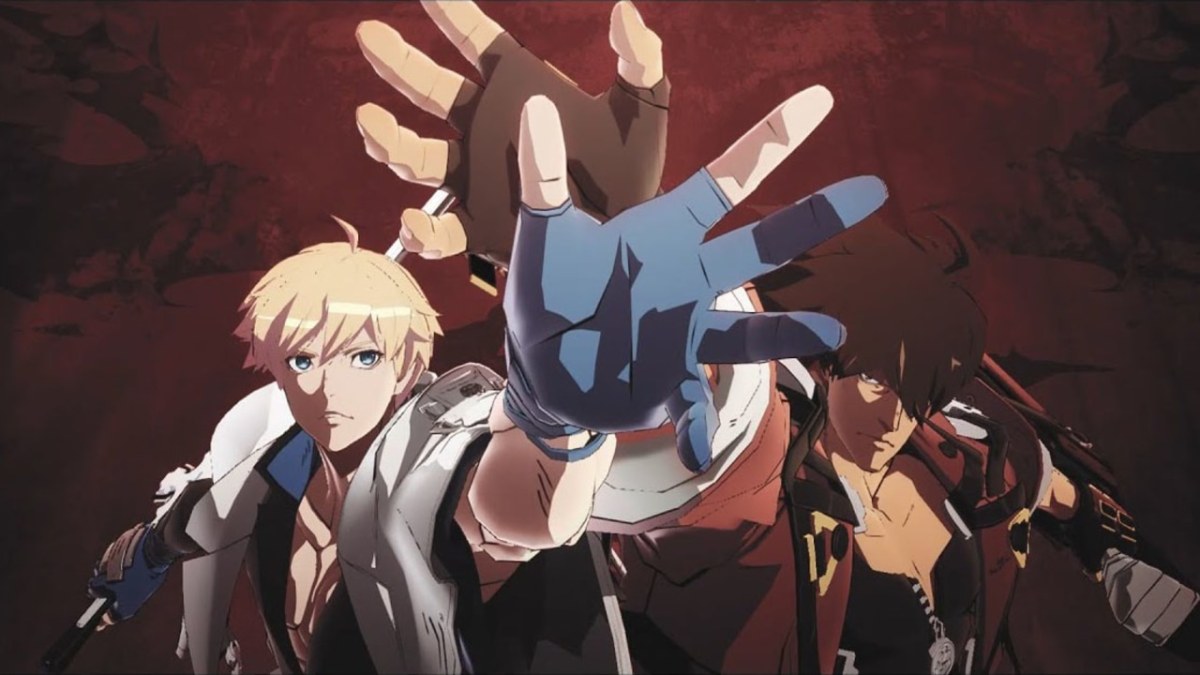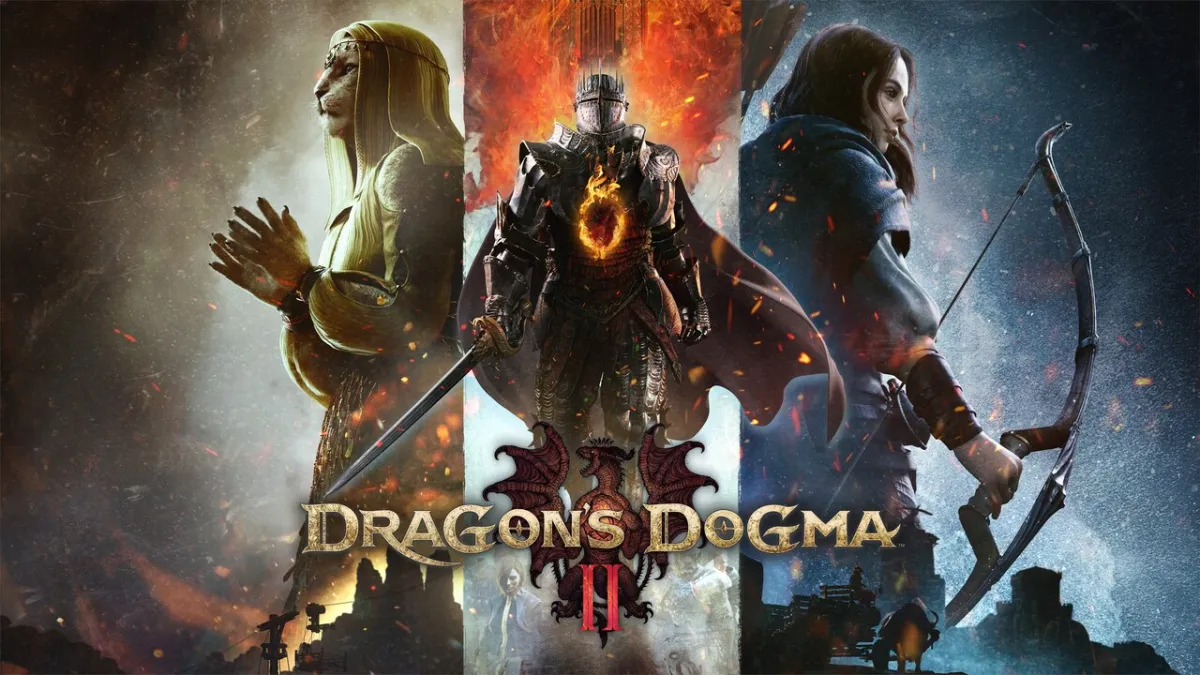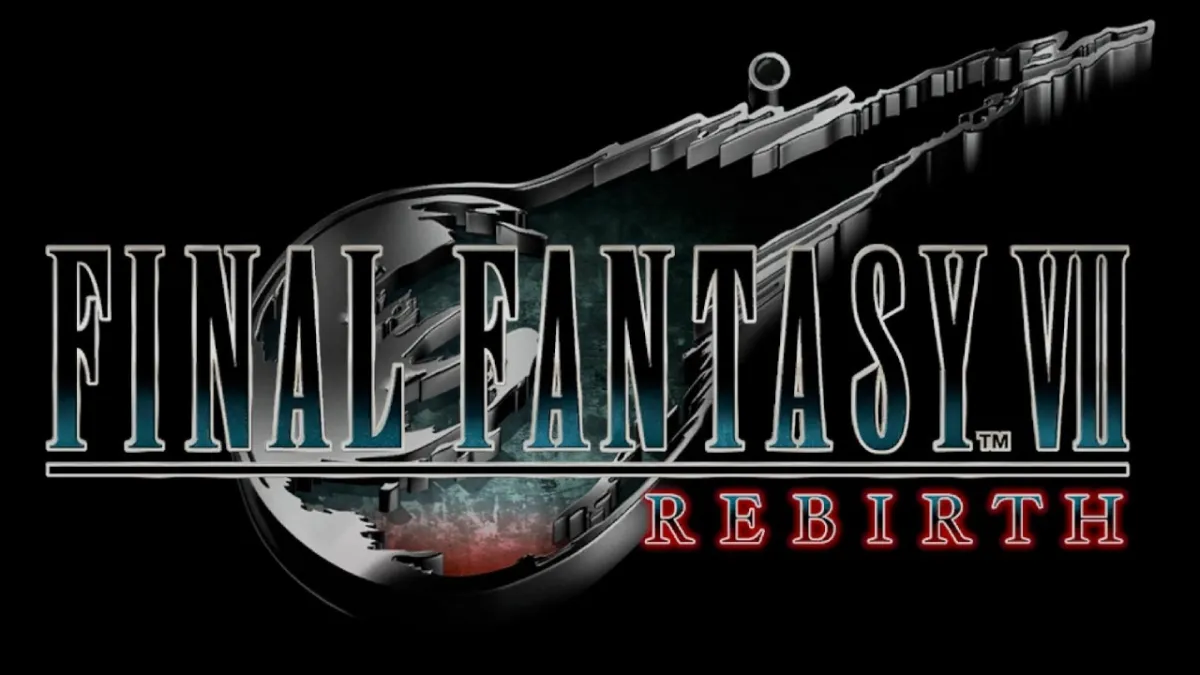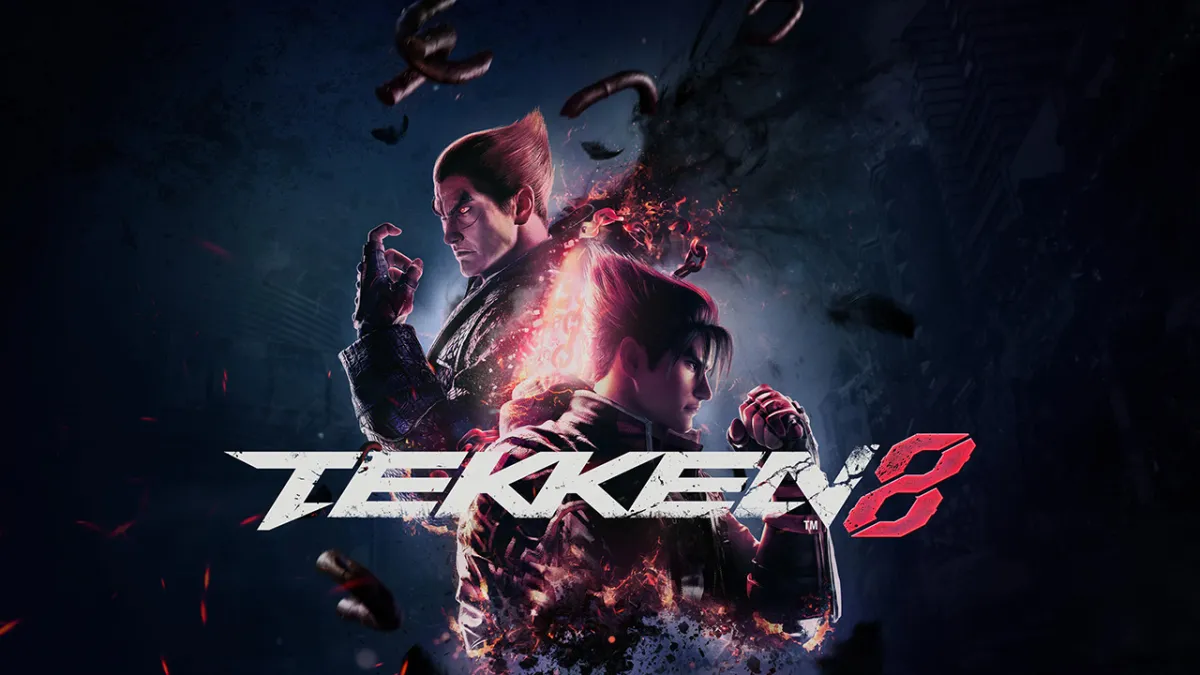Guilty Gear Strive, on the surface, is simply the stylish reboot of the Guilty Gear franchise, but the game has come to represent more than that as well. Fighting games have long had a bad reputation for being difficult to play online due to spotty netcode and being terribly inaccessible to new players; Guilty Gear as a franchise itself has especially been accused of these things. With Guilty Gear Strive, Arc System Works has set out to fix all of these issues and even welcome new fans into the labyrinthine lore of the long-running franchise. Thankfully, they mostly nail it.

Single Player
The single-player options for the game are a bit scant, but what is there is really cool. The story mode is simply a 3D anime mini-series with no gameplay attached to it. While this may bother some, I found it to be a fun watch, and it allowed the developers to avoid the weird pacing fighting game stories often adopt. I suspect many people will love or hate this approach. There is a second mode within the Story option called Guilty Gear World, which recaps the previous games through written descriptions and intricate flow charts. These charts especially feel like a labor of love meant for people who want to learn the story of the series or remind themselves of details they have forgotten. While this approach strengthens the developers’ ability to world build and tells the story they want, it only leaves one other substantial single-player mode outside of the Tutorial and Mission mode with actual gameplay. Arcade mode is, fortunately then, a strong showing for the game. Instead of having the player select a difficulty, it scales match to match based on your performance, meaning that you need to play very competently to maintain the more difficult routes in the mode. This adds to the challenge for players trying to maintain hard routes and does a lot to welcome new players by giving them matches they can handle. Later in a given arcade run, if you perform well enough, the game enters into a tag mode, not dissimilar to that in the Street Fighter Alpha series, where you and a CPU take on a buffed character together. This especially feels like a really cool moment for the mode and sets it apart from the competition. My only wish is that this tag fight feature been expanded into a co-op mode or was selectable from the versus match section so that you could quickly access this style of gameplay and create your own matches in the style. Verus mode works as expected, allowing you to pick a CPU of varying difficulty and play against them or a friend.
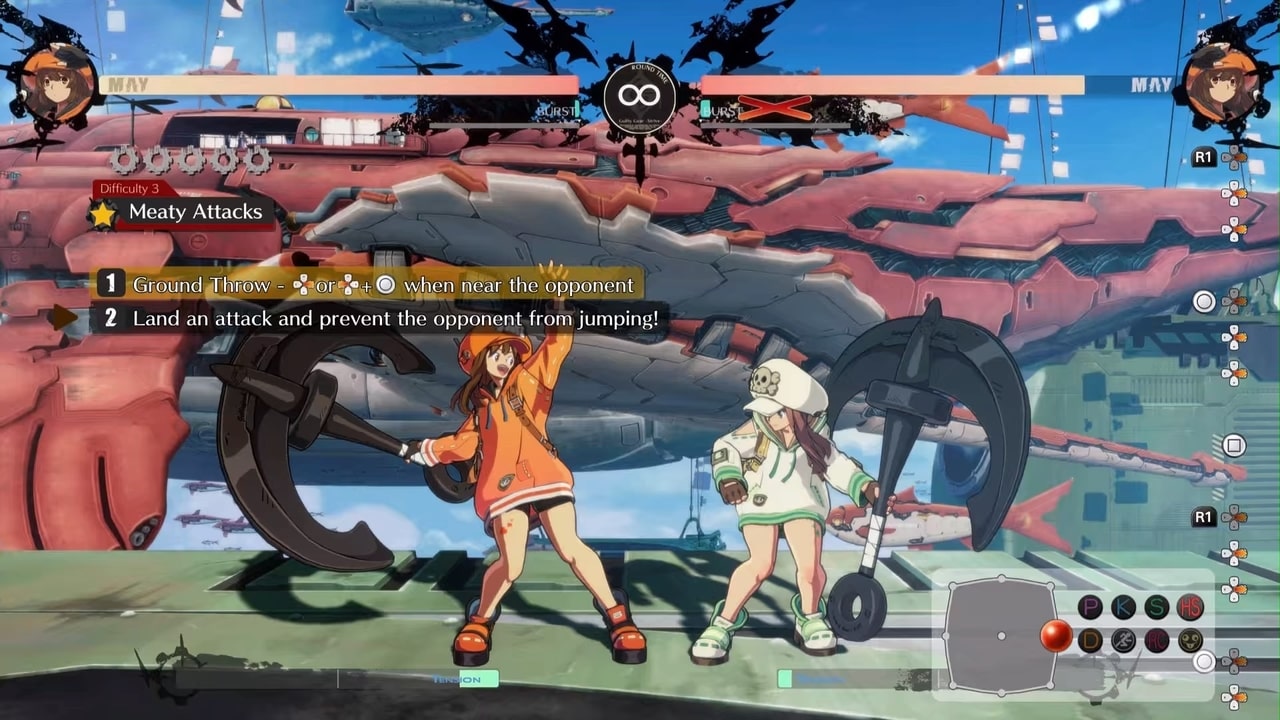
The rest of the single-player mode is made up of the Tutorial, Mission Mode, and Training. The Tutorial itself is a decent run-down of the basic buttons and how the game works in the most rudimentary way. It’s pretty good at getting these ideas across, and it gives the player a sandbox area to mess around with them. That being said, it is not the best learning tool the game offers. Mission Mode is the real tutorial, and it is excellent. Mission mode is broken into 5 difficulty tiers, each with a wide range of tasks to complete. The basic ones start with things like dashing and basic combos. By the time you reach the higher difficulties, the game teaches you how to do air dash cancels, pre-emptive inputs, hit confirms, and more. The Mission mode also includes match-up-specific tutorials. If you are having trouble fighting a specific character, you can do the missions for them and learn to fight them with whatever character you choose. This is one of the best learning tools the genre has to offer. These lessons teach fundamentals, where most other Mission modes try and teach long combos. These combos are useless if you don’t know how moment-to-moment interactions play out in the game; Guilty Gear Strive’s developers thoroughly understand this and built Mission mode around basic fighting game fluency instead. The only real downside to this mode is that it does not have a simple combo challenge mode to enable people to learn more potential combo routes as well, though, by the end of the Mission mode, many players will have an idea of how to piece combos together themselves, and the developers have stated that the game will be receiving a combo trial mode sometime after launch. The strength of this Mission mode is also bolstered by the command list, which features full videos of the moves and some context for their usage in a match. The training mode has all of the features players expect of modern fighting games. You can control the enemy’s state, pull up command lists, and create whatever sort of scenario you need to. While a combo trial mode would be much appreciated, Strive still offers one of the best learning experiences of any fighting game.

Gameplay and Graphics
Part of the reason the Mission Mode works so well is Strive’s approach to gameplay. Previous titles in the series had long and intricate combos, whereas this game has shorter ones with serious damage output. There are also plenty of simple combos such as slash-slash or slash-heavy slash, which are universal across most characters. Because of the high damage, players who are just learning can experiment with these simple 2-3 hit combos and different variations on them. Characters like May have strong one-button punishes. The game is really welcoming. This is not a compromise to the game’s depth, however. Guilty Gear’s Roman Cancel System, which allows a player to use a section of their special meter to manipulate time around them, is more intricate here than ever before. It allows players to extend combos, sometimes taking 50-70% of the opponent’s health. It offers a defensive option to push enemies away while you are blocking. It allows you to slow the opponent momentarily for punishes or cancel the startup or recovery frames of an attack you have performed. Your burst, its own separate meter, also allows for canceling combos you are hit by and a range of offensive options. The burst and Roman Cancel systems give the person playing a tremendous amount of freedom, more than any other popular title in the genre. Guilty Gear Strive wants to bring new players in with its accessible foundations and keep them there for hundreds of hours with its extreme freedom and depth, and it provides just about everything the player needs to make that happen. Not only is the gameplay wonderful, but it also looks and sounds excellent.
Graphically, Guilty Gear Strive is the prettiest triple-A 2.5D fighting game on the market. The 3D art rendered in a way that it appears 2D is breathtaking. The team really took what they learned with the previous Guilty Gear and Dragonball Fighter Z and pushed it to its absolute limit. The animations are superb, and while the over-the-top anime visuals may not be for everybody, people who are into it are in for a treat. The 4k visuals on the PS5 really pop. The soundtrack is, like the gameplay, a bit of a shift for Guilty Gear. Where previous games had more over-the-top heavy metal, Strive has some more restraint, though it still adheres to the hard rock aesthetic that has defined the series. May’s theme, The Disaster of Passion, along with Millia’s theme and a few others, stand out as some of the best songs the series has ever seen. Adding to the great original soundtrack is the fact that most of the soundtracks from previous entries are unlockable in the game. As players acquire in-game currency, they can use it to fish for random items in the online lobby, including music for the soundtrack. These unlocked songs can be set to play in matches or listened to from the collection. This means that the selection of music is massive, and most people will have no problem finding tracks they enjoy playing during fights. The game’s aesthetics are aided by the lack of any meaningful loading time on PS5 outside of waiting for server connections and the attention paid to the visuals of loading screens. The aesthetic presentation is both cohesive and, thanks to the immense soundtrack, customizable.
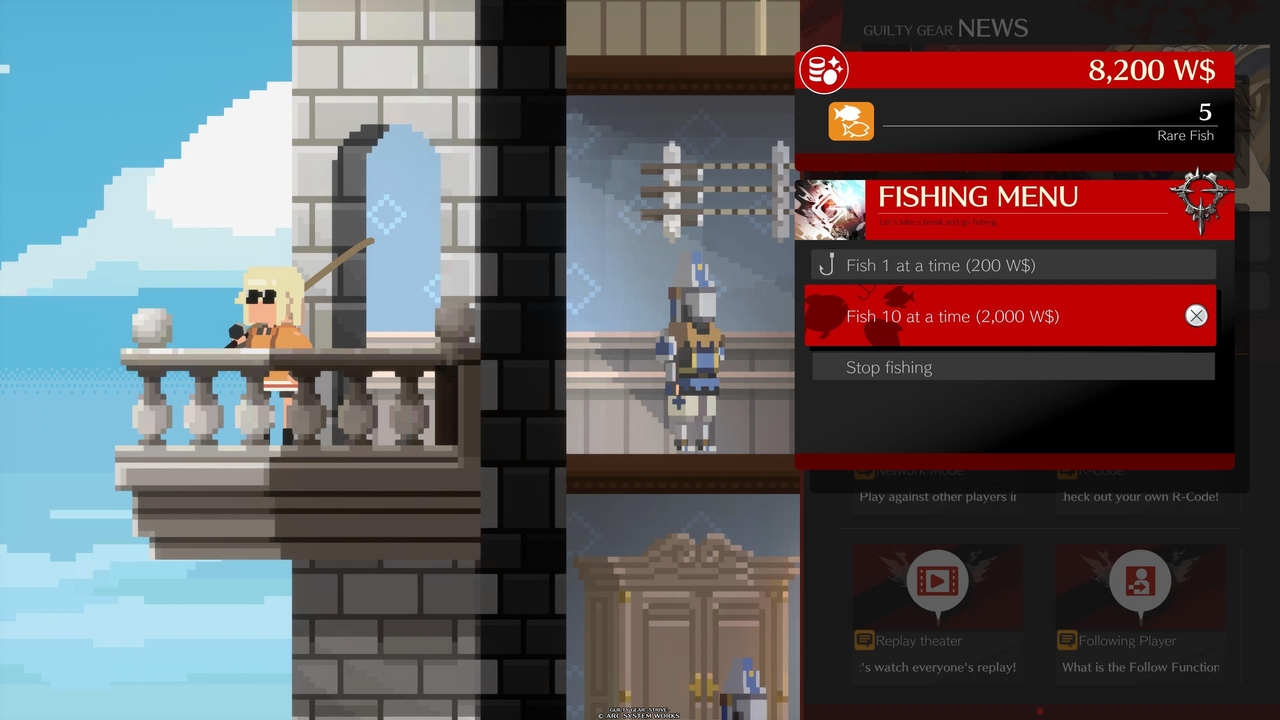
Online Multiplayer
The other major part of the Guilty Gear Strive experience is the online multiplayer. Arc System works decided to reinvent the wheel a little bit with this one, and for the most part, it pays off. The first major change they made was to the ranking system. Most fighting games matchmake players and keep track of points, adding to them when you win and subtracting when you lose. This can make ranked play a stressful affair and can easily lead to frustration. Guilty Gear Strive forgoes this for a floor-based system. There are 10 floors to start and a hidden 11th floor for the best of the best that most players will never see. Players are assigned a floor and can walk around with their customizable chibi avatar, where they challenge players to fight at the machines located around the room. There is no visible point system, and players can always move to higher floors, though they cannot go back down to lower ones unless they rank down. This removes a lot of the stress of ranked play; if you’re on floor 8 and go on a losing streak, you can stay there instead of grinding the 7th floor again. The lack of ability to go back down to lower floors means high-skill players can’t bully newer players unless they elect to go to a higher floor. Heaven, the secret 11th floor is only accessible to people who qualify, meaning that high-level competitive players do not interfere with more casual play. There is also the park, an area open to everyone regardless of skill level, and the Player Match option which allows people to create a private or public lobby for up to 8 people. The only real drawback of this system is that sometimes the chibi avatars lag a bit moving around the lobby, or you end up waiting for a match due to an odd number of people in the given room. These issues, unfortunately, hamper the system, but they are far from dealbreakers and amount to small issues in an otherwise innovative system. Most importantly, they don’t impact the actual gameplay.
As I mentioned in the introduction, the online multiplayer component in fighting games is often lacking. Mortal Kombat 11 has great online, but most Japanese developers in the genre have stuck to the archaic delay-based systems that have been an issue for over a decade. Guilty Gear Strive then marks the first time a triple-A Japanese fighting game developer outside of Capcom has adopted the system and the first time in a major release that it has been implemented properly. Strive’s rollback netcode is excellent. It is on par with the standards set by Mortal Kombat 11 and, at least so far, seems more reliable. In 10 hours of online play, I’ve only had 2 matches lose connection, and I only encountered lag once while in a match. Furthermore, I have been able to play matches with people across North America, Europe, and Japan. This was, in most fighting games, unimaginable a few short months ago. This is exciting for several reasons. The first is that the vast majority of matches online will feel like offline play if you are in the same region or even nearby regions such as the east and west of North America. The other is that it expands the life of the game. Players will be able to find matches in the game much longer since they can play with reasonable performance in any region. As the game ages, finding people to play with should not be a problem like many other titles in the genre where playing someone even at the edge of your region could be an issue.
The Verdict
Guilty Gear Strive presents an excellent package to those who play it. It does a lot to make the genre accessible to new players and teach returning players new skills. The story mode, while lacking gameplay, is an enjoyable watch, and the arcade mode sets itself apart with its 2v1 gameplay while offering the same replayability of arcade modes in other titles. The online multiplayer sets a new standard for performance in the genre and is commendable for the steps it takes to make the online ranked mode feel welcoming and stress-free. The graphical presentation and soundtrack do an excellent job of tying the whole package together.
This is not to say the game is perfect, however. The lack of single-player options does hurt it a bit and makes it feel scant for those who do not want to play online. Even though a combo trial feature is promised for an update, it is still missed here at launch and would work to make single-player feel more complete and round out the otherwise excellent Mission mode. The online lobbies can be a little laggy when looking for a match and are not always seamless to use, even though they don’t impact the core experience. The game could probably use a more traditional matchmaking system in addition or a way to look for a different room in your region at the same rank. However, these complaints at the end of the day feel minor unless you have absolutely no intention of touching the online modes.
Guilty Gear Strive pushes the fighting game genre into the next generation with immense style and engrossing gameplay. While Guilty Gear Strive may lack robust single-player modes, it is setting a new gold standard for the fighting game genre in almost every other way. Guilty Gear Strive feels excellent to learn and play, and it presents it all with an aesthetic and visual flair that is entirely singular. If you are going to play a fighting game right now, Guilty Gear Strive is the one you should pick.
Guilty Gear Strive is available on PlayStation 4, PlayStation 5, and PC on June 11th.


